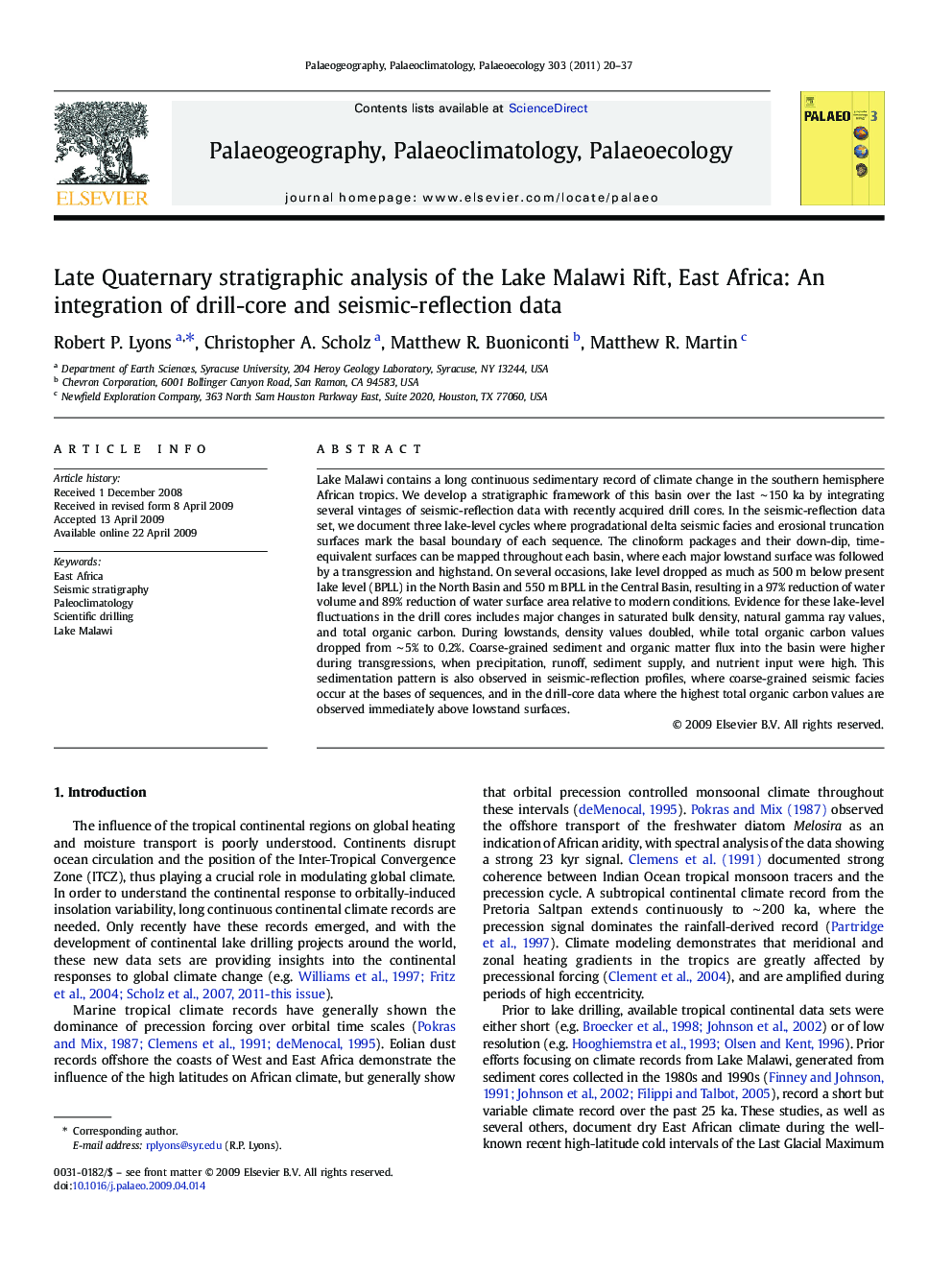| Article ID | Journal | Published Year | Pages | File Type |
|---|---|---|---|---|
| 4467333 | Palaeogeography, Palaeoclimatology, Palaeoecology | 2011 | 18 Pages |
Lake Malawi contains a long continuous sedimentary record of climate change in the southern hemisphere African tropics. We develop a stratigraphic framework of this basin over the last ∼ 150 ka by integrating several vintages of seismic-reflection data with recently acquired drill cores. In the seismic-reflection data set, we document three lake-level cycles where progradational delta seismic facies and erosional truncation surfaces mark the basal boundary of each sequence. The clinoform packages and their down-dip, time-equivalent surfaces can be mapped throughout each basin, where each major lowstand surface was followed by a transgression and highstand. On several occasions, lake level dropped as much as 500 m below present lake level (BPLL) in the North Basin and 550 m BPLL in the Central Basin, resulting in a 97% reduction of water volume and 89% reduction of water surface area relative to modern conditions. Evidence for these lake-level fluctuations in the drill cores includes major changes in saturated bulk density, natural gamma ray values, and total organic carbon. During lowstands, density values doubled, while total organic carbon values dropped from ∼ 5% to 0.2%. Coarse-grained sediment and organic matter flux into the basin were higher during transgressions, when precipitation, runoff, sediment supply, and nutrient input were high. This sedimentation pattern is also observed in seismic-reflection profiles, where coarse-grained seismic facies occur at the bases of sequences, and in the drill-core data where the highest total organic carbon values are observed immediately above lowstand surfaces.
